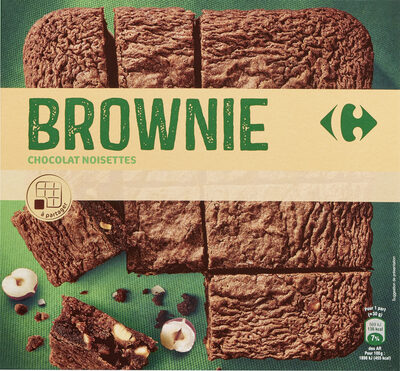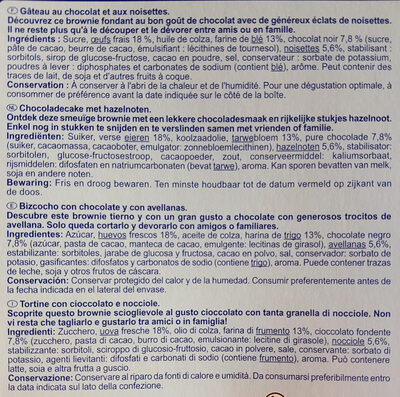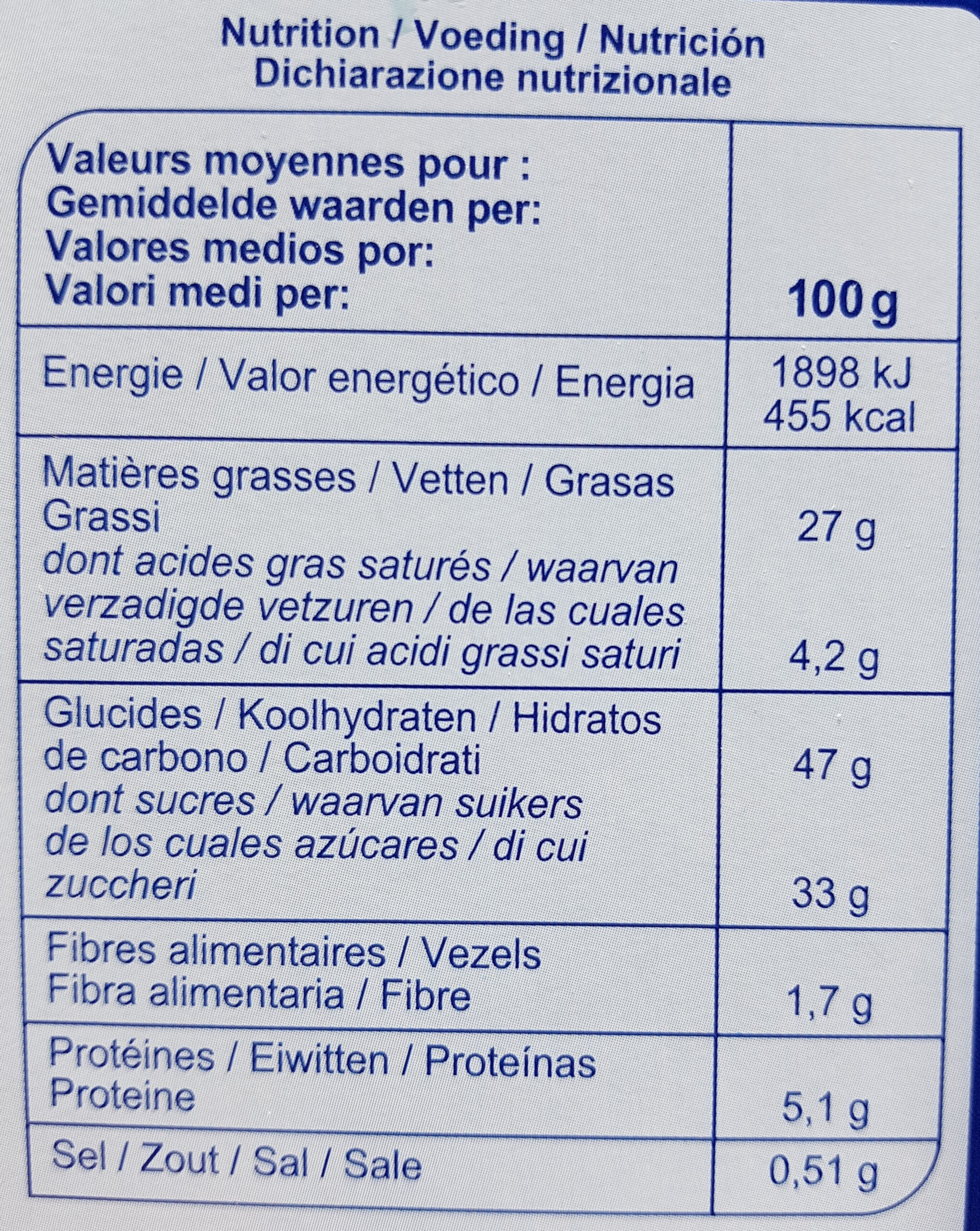Brownie chocolat et noisettes - Carrefour - 285 g e
This product page is not complete. You can help to complete it by editing it and adding more data from the photos we have, or by taking more photos using the app for Android or iPhone/iPad. Thank you!
×
Some of the data for this product has been provided directly by the manufacturer Carrefour.
Barcode: 3245412416620 (EAN / EAN-13)
Common name: Gâteau au chocolat et aux noisettes.
Quantity: 285 g e
Packaging: fr:Barquette aluminium, fr:Boîte carton, fr:Sachet plastique
Brands: Carrefour
Categories: Snacks, Sweet snacks, Biscuits and cakes, Cakes, Chocolate cakes, Brownies
Labels, certifications, awards:
Green Dot, No palm oil, Nutriscore, Nutriscore Grade D, Triman

Origin of the product and/or its ingredients: Ce brownie est fabriqué dans le Loir-et-Cher avec des noisettes d'origine d'Europe et d'Asie et du chocolat fabriqué dans l'Union Européenne.
Producer: Fabriqué en France par EMB 41059G pour Interdis
Manufacturing or processing places: France
Traceability code: EMB 41059A - Contres (Loir-et-Cher, France), EMB 41059G - Contres (Loir-et-Cher, France)
Stores: Carrefour, carrefour.fr
Matching with your preferences
Other information
Other information: 285g e Découvrez ce brownie fondant au bon goût de chocolat avec de généreux éclats de noisettes. Il ne reste plus qu'à le découper et le dévorer entre amis ou en famille. Gros picto A partager (en dehors du bandeau, en facing)
Conservation conditions: À conserver à l'abri de la chaleur et de l'humidité. Pour une dégustation optimale, à consommer de préférence avant la date indiquée sur le côté de la boîte.
Customer service: Interdis - TSA 91431 - 91343 MASSY Cedex - France.
Report a problem
Data sources
Product added on by miles67off
Last edit of product page on by inf.
Product page also edited by beniben, carrefour, date-limite-app, driveoff, ecoscore-impact-estimator, fgouget, kiliweb, minteen, morganesh, openfoodfacts-contributors, org-carrefour, packbot, quechoisir, tacite, yuka.SFlNSE0vb0VqZU1RdWNFYnJobk4zc2hTKzc2dFVUM21jdFFMSWc9PQ, yuka.Vm81YUg3Z3F1ZjAwcDhVRTlEVHcvT2t0bThLcFcxNlVNODQ3SVE9PQ, yuka.YW9JRU1vMER0Tk1QcS9CbjR4N2MydmhSLzhPNVdGS3FOTkFTSVE9PQ.












